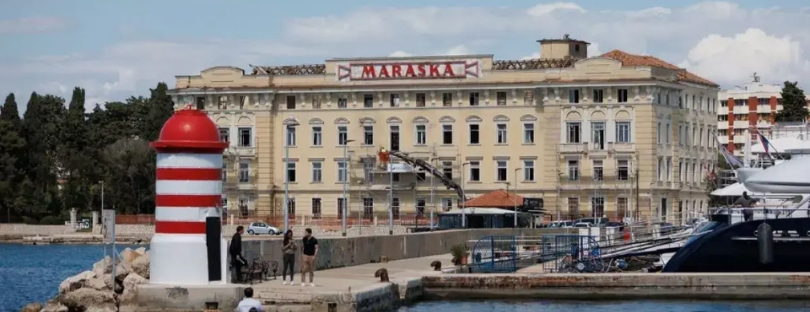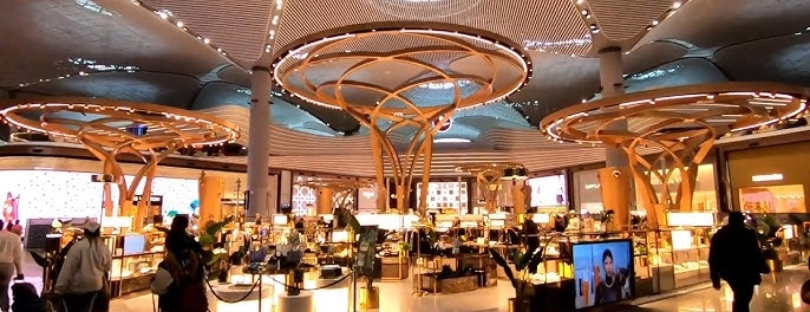
The Balkans Is a Bright Spot in Europe’s Modest Tourism Growth
Demand for European tourism is expected to maintain an upward trajectory over 2019. However, growth rates by destination are slower than in previous years. The region will struggle to remain resilient as trade tensions disrupt the global economy. While Europe’s largest long-haul markets continue to support tourism growth, the contribution from intra-European demand will become even more significant. Find out more about Europe tourism below.
New numbers from the European Travel Commission show reasons for measured optimism.
Growth in international tourist arrivals to Europe is expected to grow 3.6 percent in 2019. Though that represents a decrease year on year — 2018 saw 6.1 percent growth — it is in line with the average rate of growth for the decade prior.
Nearly every destination that provided data for the first two quarters of 2019 reported “significant increases in tourist arrivals early in the year,” the report, released Thursday, noted. However, the peak summer months will be the truest indicator of the year’s overall performance.
Balkan destinations’ efforts to expand the tourism season, diversify the product offer, and develop niche marketing are bearing fruit: Montenegro (+50%) and Turkey (+12%) were the only destinations which have posted double-digit expansions so far this year. Star performers were also Slovenia and Greece (both +8%); following almost five years of solid growth, 2019 prospects for Greece are positive despite the return of competing destinations.
Europe’s top growth destination based on early-2019 data was Montenegro which actually saw demand growth tick upwards from earlier in the year. 
Demand to Turkey has also gathered some steam compared to earlier in the year, with arrivals up 12.2% in the first four months of the year compared to the same period a year ago. Arrivals growth for the first two months of the year was 7.4%. Growth was reported from all source markets for which data are available. In almost all cases growth was significant, however growth from China was somewhat subdued. Lingering weakness of the lira should support further growth into the peak summer tourism season. europe tourism
Serbia was the third fastest growing destination based on latest on available demand data for 2019. This performance (as third fastest growing destination) was driven by overnights growth of 8.3%, but arrivals also grew at a robust rate of 4.5%, both based on data to March. This has been aided by a growing number of flights operated by Europe’s low-cost carriers to and from Serbia.
Efforts to market Serbia to Asian tourist have started to bear fruit; in May, nearly 40 tourism agencies from 12 Asian countries including China took part in the workshop co-organized with Turkish Airlines and the Serbian Tourism Organization, the purpose of which was to showcase the tourism potential of various destinations within Serbia (i.e., not just Belgrade).
Such efforts have already yielded significant demand growth from China, with arrivals up 55.6% based on data to March. Continued efforts in this regard will likely support further growth. More generally, Belgrade’s designation as cheapest city in Europe to visit in Post Office’s Travel Money City Costs Barometer last year has likely provided some impetus for demand growth from within Europe.
For Slovenia, a recent win for Ljubljana and Bled’s runner-up spot at the ITB Berlin (the largest tourism fair in the world) is indicative of the country’s efforts to attract travel demand.
On the other hand, Iceland (-11%), Romania (-7%) and Estonia (-2%) have reported a decrease up to April. In the case of Iceland, the recent collapse of low-cost carrier WOW Air in March will have exacerbated this decline, whilst Estonia decrease might be explained by the reduction in arrivals from Russia – one of its largest source markets – which were down 8.7% compared to the same period a year ago.
European airline growth outperformed global air passenger growth europe tourism
In global terms, Europe has outperformed all other regions, posting 7% growth in revenue per kilometre (RPK) in the first four months of the year compared to last year. This comes despite the pressure of increased demand and constrained air-traffic control capacity, which has had the impact of increasing possible delays and cancellations, which already had an estimated cost of €17.6bn in 2018 to the EU economy.
Among Europe’s key long-haul source markets, the US and China continue to stand out in terms of their contributions to European tourism growth accounting for a share of 11% and 4% respectively. Chinese travellers concentrated mainly in Southern/Mediterranean destinations: Montenegro (+150%), Cyprus (+62%), and Croatia (+44%). Another fast-growing destination in terms of Chinese arrivals was Lithuania (+77%). Interestingly, despite a possible slowdown of the American economy, Greece (+47%), Turkey (+37%), and Cyprus (+33%) saw the most significant increases in arrivals from the US early in the year. europe tourism
Eduardo Santander, Executive Director of ETC said “It is clear to us that maintaining growth in 2019 will be much more challenging than in 2018. Europe must align its market mix, identify under-served segments and further expand its understanding of pan-European product development. Through the promotion of transnational experiences, ETC is seeking to raise visibility for the plethora of products available and to create awareness of the region’s diversity. An essential pillar to achieve the sustainable growth of European tourism are public-private partnerships following a focused approach with common and achievable goals.”









